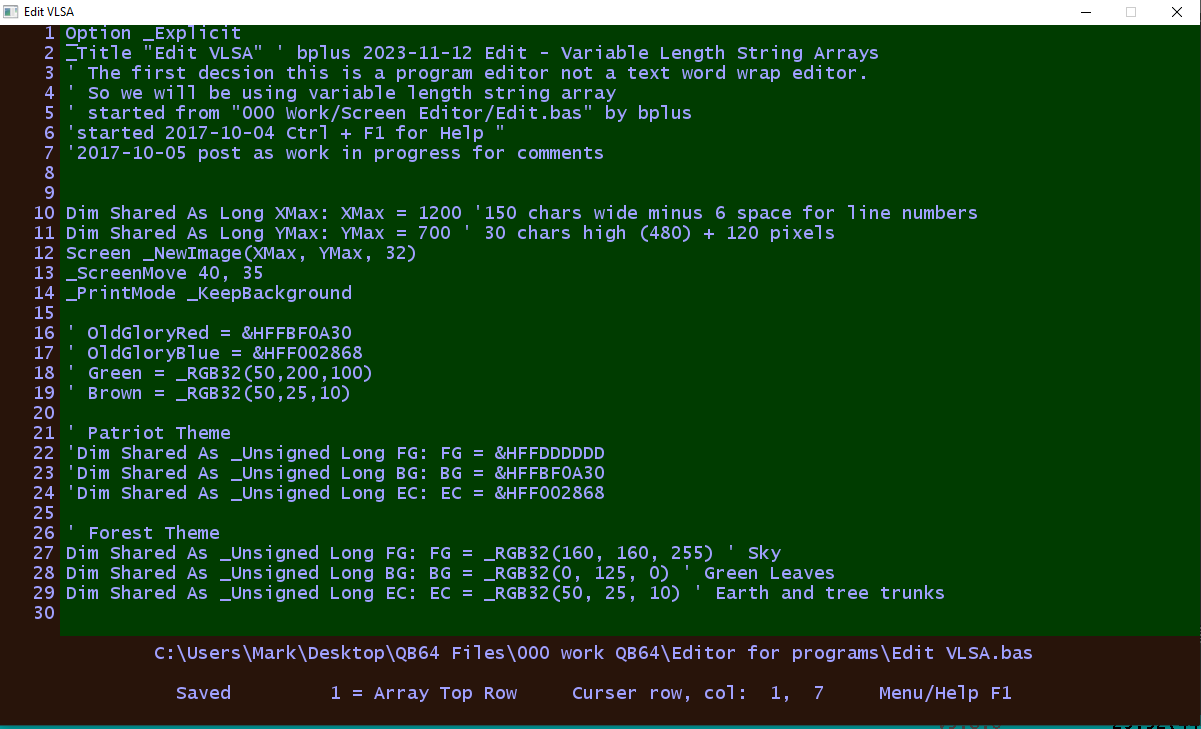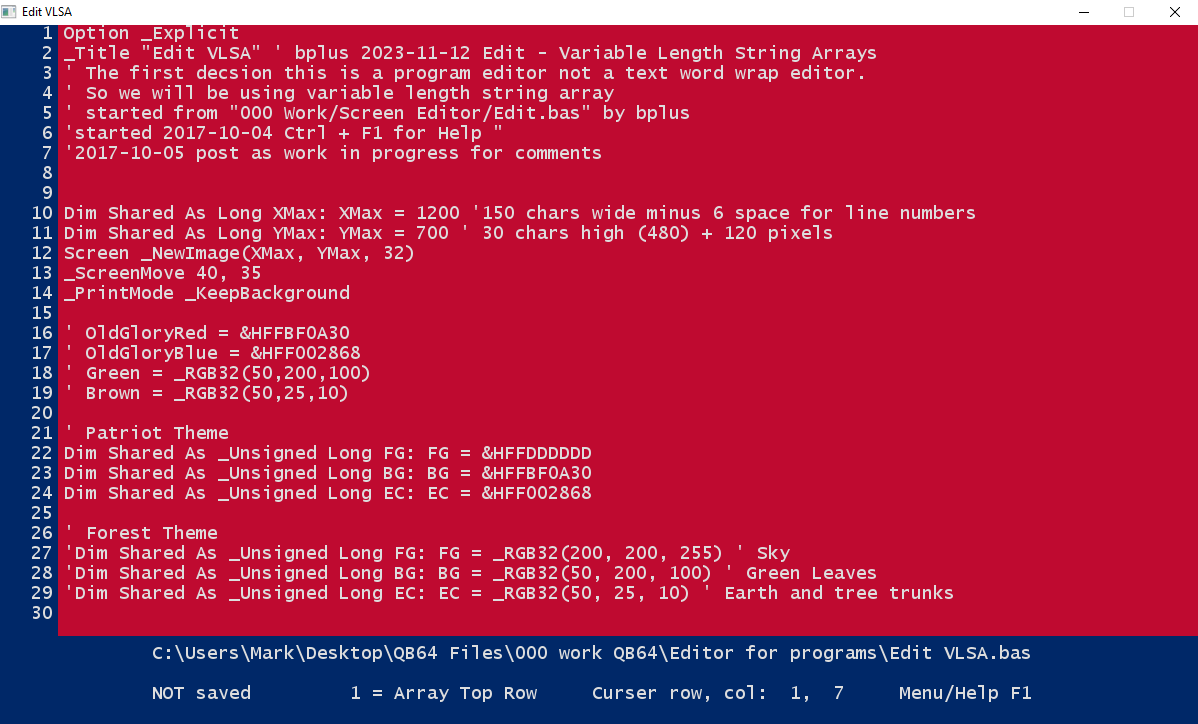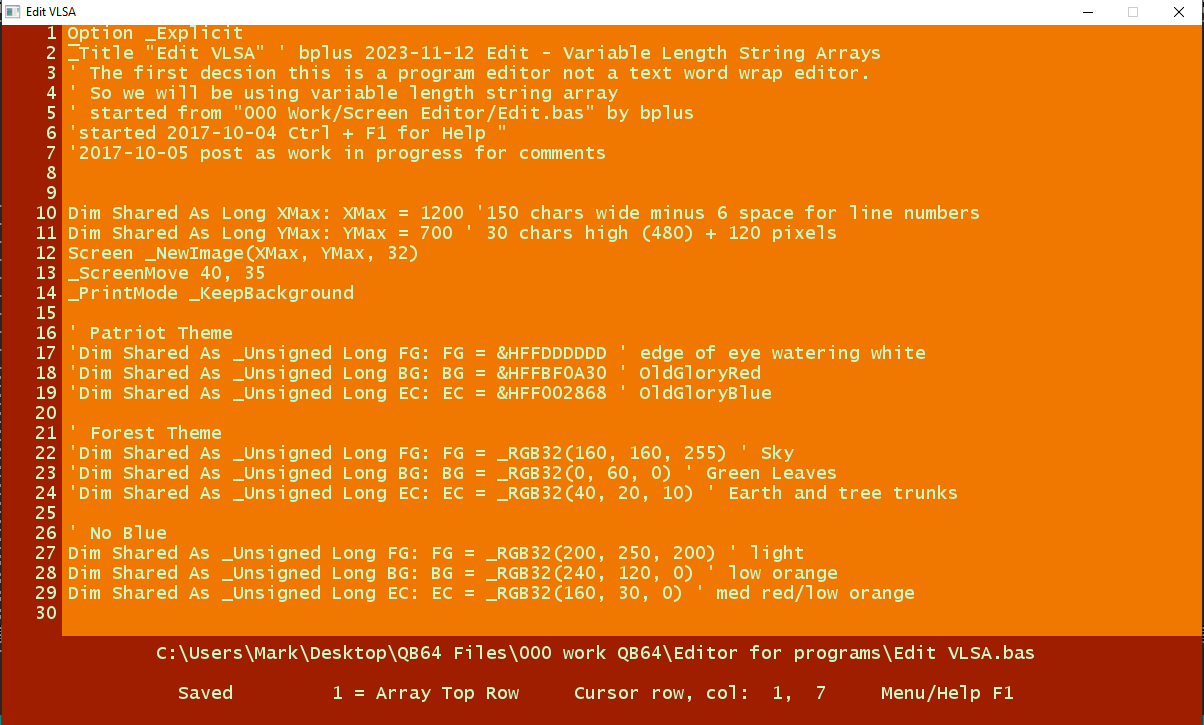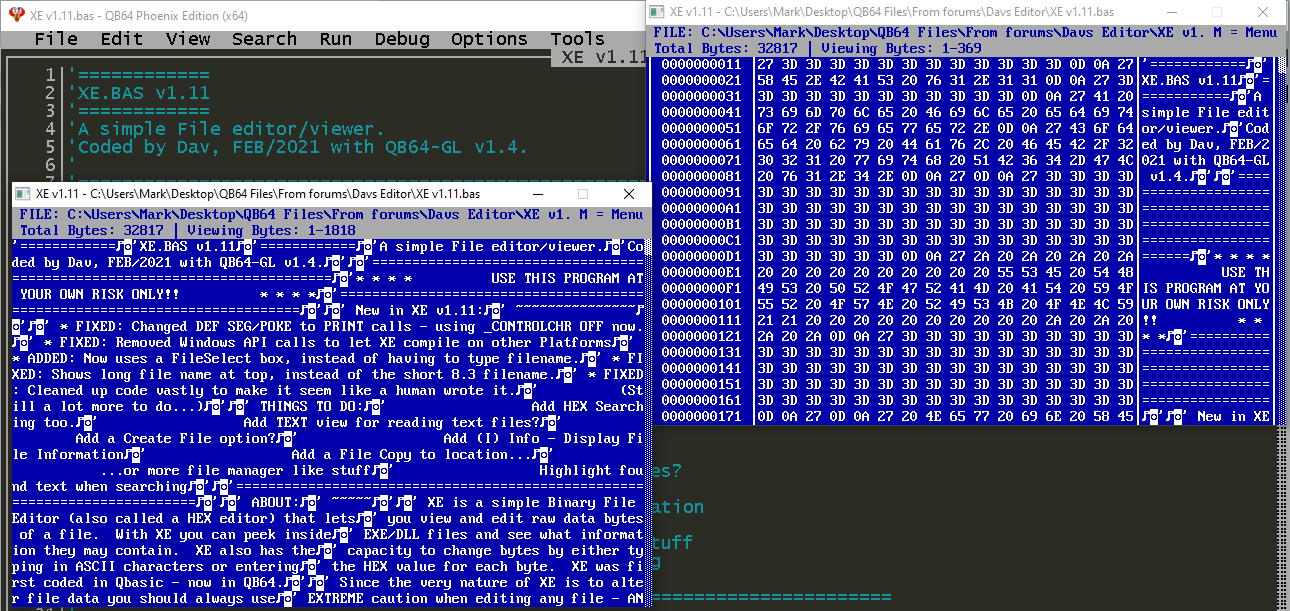11-19-2023, 09:04 PM
Where did I get the idea I could build one for 300 LOC?
I am at 617 LOC and haven't finished Cut/Copy/Paste yet but 3 Color Themes I have already:
Forest

Patriot

Orange (No Blue!)

Ha! gotta get those colors first thing! But also font that is a size easy on eyes. Thanks to Terry for Lucon 18 pixel hieght Mono, my eyes are loving it both in IDE and this Editor (for programs not Word Wrap), Forest is my choice, Orange / No Blue gave me a headache!
So Dav's is OK at 891 LOC plenty of instructions, you can figure it out if you're willing to put up with all that tight packing into a "Pete" Screen

You can toggle with Enter key between a Hex thing and a more normal thing.
And we've already commented on Eric's growing monster ;-))
I think I saw one (Editor at 300 LOC) back in mid 90's, Dr Dobbs Journal?, I think.
https://en.wikipedia.org/wiki/Dr._Dobb%27s_Journal
One of those jobs you type from a paper or magazine.
I think I saw one in there for QB, haven't been able to dig it up or anything close to it.
I might have mentioned this before, sure would like to see that code again!
Anyone got anything close to bare bones editor only a few c's of lines ?
I am at 617 LOC and haven't finished Cut/Copy/Paste yet but 3 Color Themes I have already:
Forest
Patriot
Orange (No Blue!)
Ha! gotta get those colors first thing! But also font that is a size easy on eyes. Thanks to Terry for Lucon 18 pixel hieght Mono, my eyes are loving it both in IDE and this Editor (for programs not Word Wrap), Forest is my choice, Orange / No Blue gave me a headache!
So Dav's is OK at 891 LOC plenty of instructions, you can figure it out if you're willing to put up with all that tight packing into a "Pete" Screen

You can toggle with Enter key between a Hex thing and a more normal thing.
And we've already commented on Eric's growing monster ;-))
I think I saw one (Editor at 300 LOC) back in mid 90's, Dr Dobbs Journal?, I think.
https://en.wikipedia.org/wiki/Dr._Dobb%27s_Journal
One of those jobs you type from a paper or magazine.
I think I saw one in there for QB, haven't been able to dig it up or anything close to it.
I might have mentioned this before, sure would like to see that code again!
Anyone got anything close to bare bones editor only a few c's of lines ?
b = b + ...





